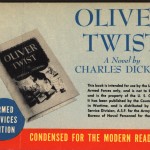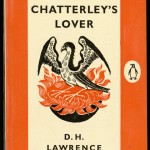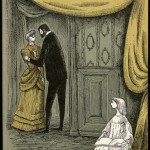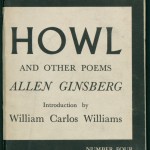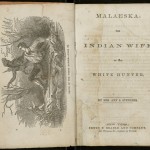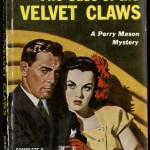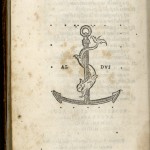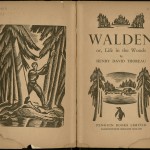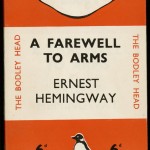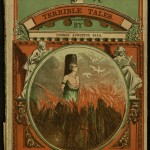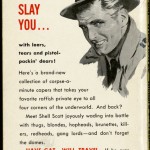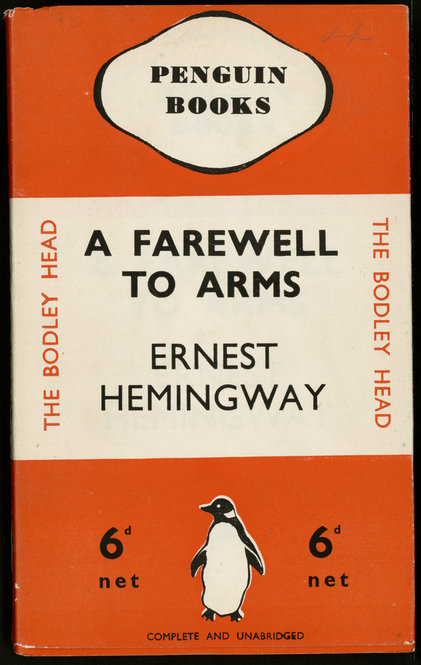
Alyssa O’Connell is an English Honors junior in Professor Janine Barchas’s seminar, “The Paperback,” in which students used the Ransom Center’s collections to research the history of paperbacks.
Among today’s reading public, the ubiquitous Penguin Books are nearly synonymous with the notion of mass-market paperbacks. The publishing house’s continual commercial triumphs since Allen Lane founded it in 1935 have provided inexpensive literary texts for readers of all ages. Despite its successes, however, Penguin has also faced failure, and one such misstep occurred only three years after the company’s inception.
On May 18, 1938, Allen Lane introduced a new paperback series, the Penguin Illustrated Classics. Ten out-of-copyright novels, short stories, and poetry collections were released simultaneously and sold at the low cost of six pence each, which is the equivalent of around $1 to $2 in modern currency. The titles were Pride and Prejudice by Jane Austen, A Sentimental Journey by Laurence Sterne, Some Tales of Mystery and Imagination by Edgar Allan Poe, Walden by Henry David Thoreau, Selected Poems by Robert Browning, Robinson Crusoe by Daniel Defoe (in two volumes), Typee by Herman Melville, The Story of My Heart by Richard Jefferies, and Gulliver’s Travels by Jonathan Swift. Every book featured at least 12 woodcut illustrations by reputable wood-engravers of the twentieth century.
Penguin’s inspiration for the books came in part from a fellow member of the Lane family. Allen Lane’s uncle, John Lane, was co-founder of The Bodley Head publishing house. From the company’s beginnings in 1887 and into the 1920s and 1930s, The Bodley Head published elite illustrated hardbacks in small quantities at high prices. Because there was a woodcut revival in the 1930s, the nephew believed it was the perfect market to present such illustrated texts with wood engravings in the new, accessible, and inexpensive paperback format. To highlight the artists, each front cover featured the illustrator’s name in slightly smaller print than the author’s name. Also, while the front flap of the dust jacket provided information about the author, the back flap offered a biography of the wood engraver. Penguin, therefore, endorsed the artists nearly as strongly as it promoted the writers.
Despite its hopes and efforts, Penguin soon found the Illustrated Classics struggling in bookstores. World War II was approaching, and the refined series alienated consumers who sought simplicity and current information. The journalistic Penguin Specials, a different Allen Lane product that offered plain aesthetics and up-to-date intelligence, became extremely popular while the experimental Penguin Illustrated Classics failed to rouse much interest. Furthermore, as illustrated texts, the poor quality Classics did not impress customers. The cheap, thin paper could not support the rather bold art of the wood engravers, thus undermining Penguin’s venture to merge sophistication with an economical product.
Ultimately, the Penguin Illustrated Classics failed to secure a niche in the market, belonging neither with the expensive hardbacks that had inspired them nor among the pre-war softcovers associated with their publisher. Penguin Books could not transform The Bodley Head’s concept into one of mass production, and the series soon vanished from British bookstores. Allen Lane, who remained with Penguin Books from 1935 until his death in 1970, encountered a disappointing initial failure that forced him to abandon his idea of uniting sophisticated hardback trends with affordable paperbacks.
Please click the thumbnails to view full-size images.
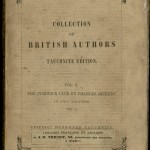


!["What Hitler Wants" by E. O. Lorimer. 1939. Following the success of his fiction paperbacks in the mid-1930s, Allen Lane turned his attention toward global affairs as Britain entered World War II. As this title reveals, Penguin played a role in politics as well as in literature and design, and its left-leaning stance figured into Britain’s war and postwar efforts. After the Labour Party came to office in 1945, the new Prime Minister Clement Attlee declared that the accessibility of left-leaning reading during the war helped his party succeed: “After the WEA [Workers’ Educational Association] it was Lane and his Penguins which did most to get us into office at the end of the war.”](https://sites.utexas.edu/ransomcentermagazine/files/2012/11/dd_247_h5__9c_001-150x150.jpg)
